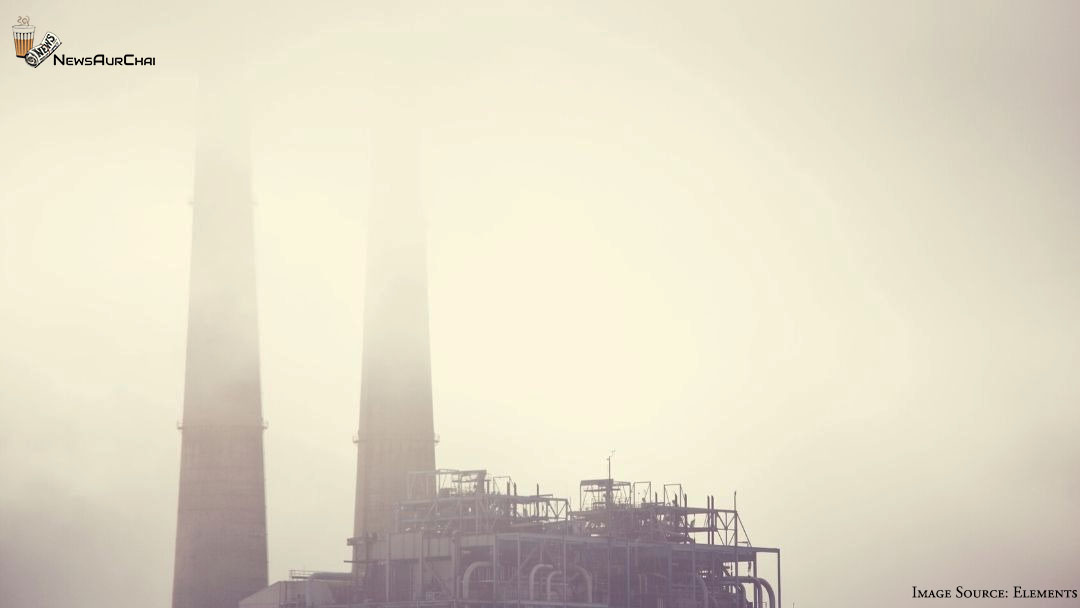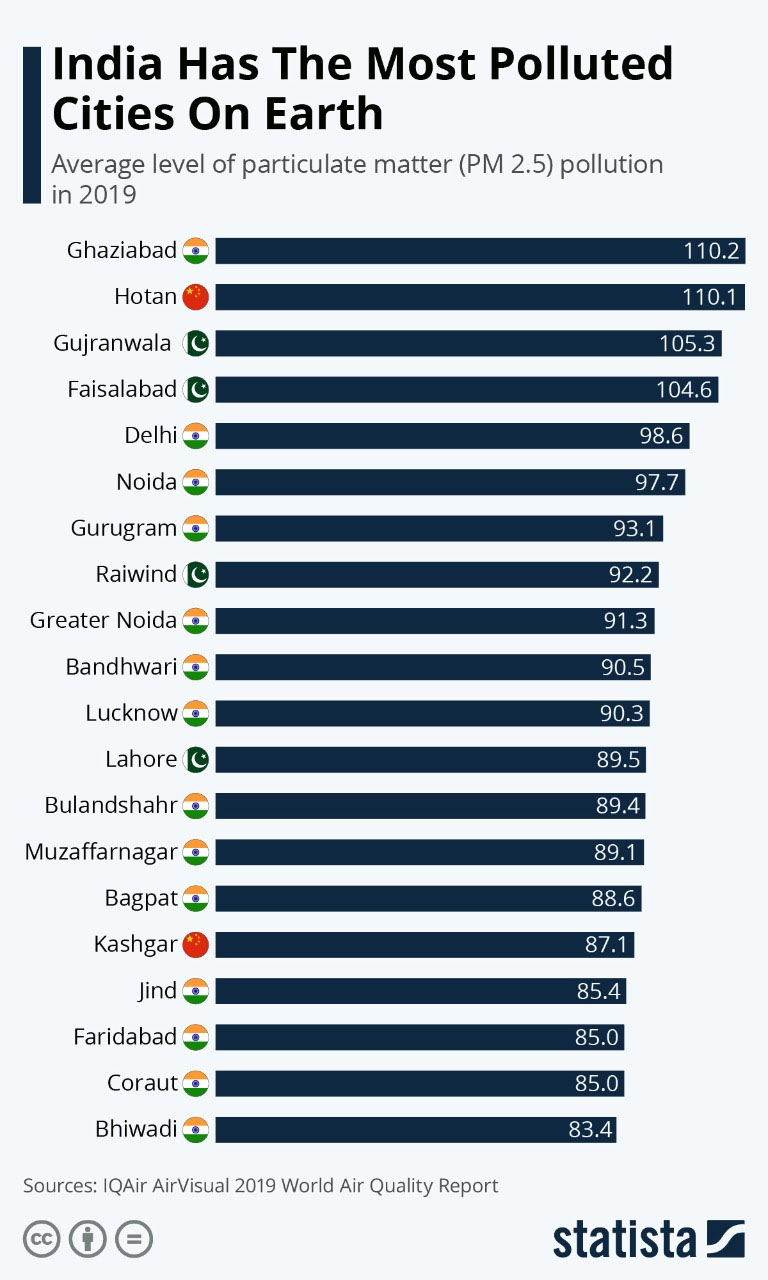
Australia’s air quality was amongst the worst during the bushfire crisis that raged through vast swathes of eastern states in December and January.
It was noted at some point that the national capital of Canberra had some of the gravest air quality on the planet.
The sever situation forced many people to wear masks to cope up with the heat mixed with the smoke. However, if you think this is the worst ever, spare a thought for the people our nation– India.
Nonetheless, it was not a surprise as India has once again topped an annual list of cities with the gravest air quality in the world. India, with over 1.3 billion population has 21 of the world’s top 30 most-polluted cities and six of the top 10 for 2019.
How was the research conducted?
The Researchers from IQ Air — a global air quality information and technology company — collected the data for the report based on the ground monitoring stations that measure levels of minute particulate matter, known as PM 2.5.
What is PM 2.5?
The PM 2.5 includes pollutants such as sulfate, nitrates and black carbon. Exposure to such particles will lead to lung and heart ailments and can weaken cognitive and immune functions.
According to studies microscopic particles, smaller than 2.5 micrometres in diameter, are considered particularly dangerous. The probability of these small particulates to enter deep into the lungs and cardiovascular system of a human are very high.
As per the report published by IQ Air’s study of the world’s most polluted cities for 2019, showed that 93 cities recorded overall yearly air quality in the unhealthy bracket.

Air Quality of Indian Cities
Ghaziabad, a satellite city of the capital New Delhi in northern Uttar Pradesh state, is rated as the world’s most polluted city, with an average of PM 2.5 concentration measurement of 110.2 in 2019. It is nine times more than the level which the US Environmental Protection Agency regards as healthy.
Last November, due to the alarming drop of the air quality in the said area a public emergency was declared–air quality index (AQI) level surpassed 800 in certain parts of New Delhi, marking it three times more than the “hazardous” level.
While Ghaziabad ranks the worst city in the world for air quality, it is just ahead of the Chinese city of Hotan, which is at 110.1.
Other Indian cities such as Delhi, Noida, Gurgram, Greater Noida and Bandwhari also featured among the top-ten worst in the world. Notably, all these places are within 40 km from the capital city, making the whole area highly polluted.
As per the report, though the Indian cities may have gotten worse in terms of their level of pollution; however, air quality in Chinese cities has dramatically improved, with average concentrations of pollutants falling 9 per cent from 2018 to 2019.
Another notable aspect of the report was, although India did have the most polluted cities, the country was ranked the fifth-worst for air quality with an annual average rating of 58.08; while Bangladesh, was rated 83.30 topping the list — easily the world’s worst for air quality. Next highest was Pakistan (65.81), Mongolia (62) and Afghanistan (58.8).
Bright side
China’s capital Beijing has more than halved its annual PM 2.5 levels over the past decade and has fallen out of the world’s 200 most-polluted cities through concentrated efforts to get air pollution under control.
Although 98 per cent of the Chinese cities still exceeded World Health Organisation guidelines.
The most interesting fact was that despite Australia having one of the world’s worst bushfire causing a high level of pollution across the nation, it still managed to stay within the stipulated limit of WHO target range.
Armidale in northern NSW, where the bushfires occurred late in 2019, had Australia’s worst average air quality for the year. Canberra was at its severest on January 1, with a daily mediocre PM 2.5 concentration of 855.6, which was 34 times above the WHO guidelines.
According to WHO air pollution causes an estimated 7 million premature deaths a year globally, mainly as a result of increased mortality from cardiovascular diseases, cancers and respiratory infections.






One Comment